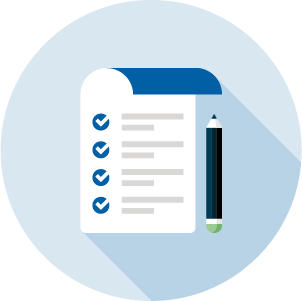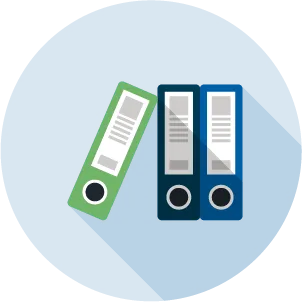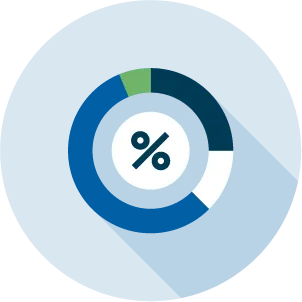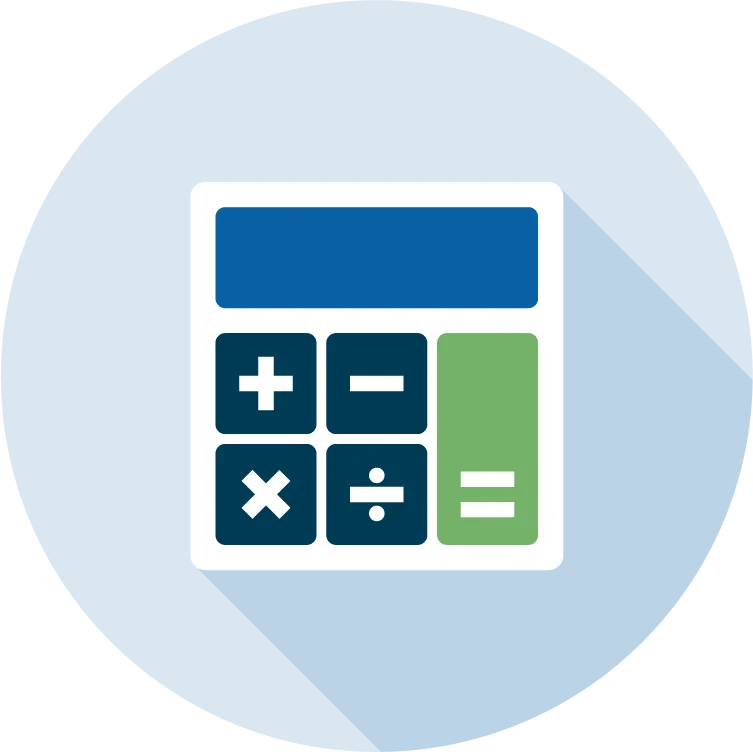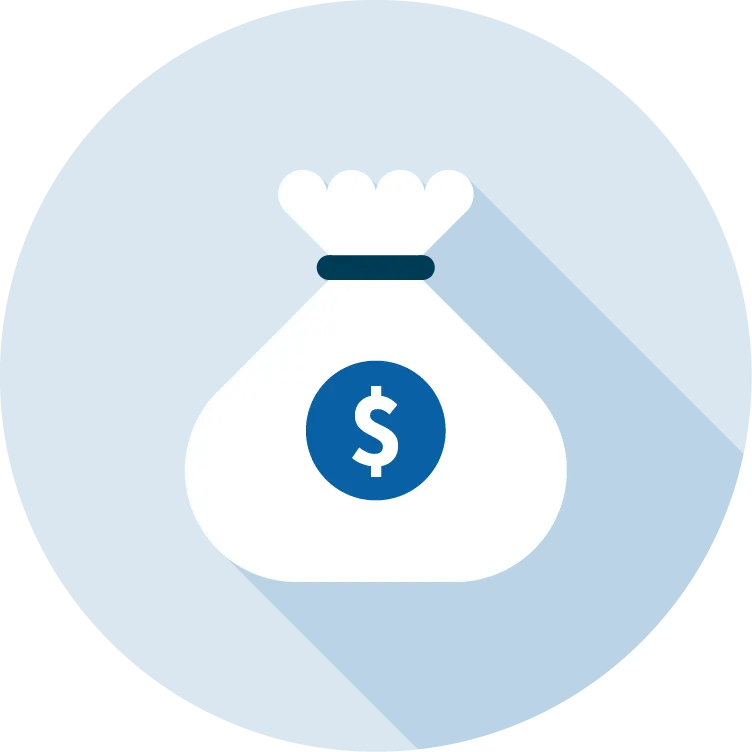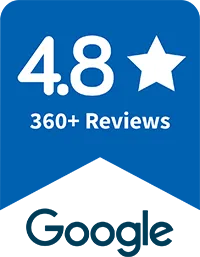To qualify for a 5/1 Adjustable-Rate Mortgage, you'll need to make a down payment of at least five percent of the total loan amount. A credit score of at least 620 and a debt-to-income (DTI) ratio below 45 percent (or 50 percent, for select borrowers**) is also required.
These requirements are subject to change depending on the property type, loan purpose, and more. Work with a dedicated loan expert to learn more.

5/1 Adjustable-Rate
Mortgage Loan
Finance Your For-Now Home and Save in the Short Term
As a homebuyer, if you plan to move or refinance your home within 5 years, the 5/1 ARM mortgage is the best option. It is a home loan type where the rate of interest is fixed for the first 5 years. For the remaining term of the loan, the rate is adjustable and changes annually depending on market conditions. You gain from lower initial payments as compared to fixed-rate mortgages.

Key Benefits
An Affordable Introduction
ARMs offer low and fixed interest rates during the initial years of the loan.
Loan Flexibility
With an ARM, you can sell or refinance to another loan option before the adjustment period begins.
Adjustment Limitations
Even if your ARM interest rate adjusts, the amount changed will have reasonable limits.
Short-Term Savings
Save more during the fixed period of your ARM and apply your funds to whatever comes next.
5/1 Adjustable-Rate Mortgage (ARM) Information
A 5/1 ARM loan is one of the most popular types of adjustable-rate mortgages. "5 1" or "5/1" or "5-1" refers to the time for which the interest rate is fixed and the period at which the rate of interest will change. To better understand the eligibility criteria and program details, you can start by speaking to one of our seasoned experts.
How Do 5/1 ARMs Work?
The 5/1 ARM starts working when the loan is closed. For instance, when the homebuyer closes the mortgage in July 2024, the rate will remain fixed until June 2029.
After five years, the readjustment happens. This is when the interest on the loan is recalculated for the next year. After a year, the interest rate on the loan will be adjusted again. This will continue until the end of the term.
The bottom line is that the monthly payment will also increase if the rate increases. The vice versa is also possible.
Terms Related to 5/1 ARMs
- Teaser or Introductory Rate: The fixed interest rate paid during the initial years.
- Initial Adjustment Cap: The maximum limit to which the interest rate can be adjusted at the first adjustment.
- Adjustment intervals: The frequency at which the interest rate changes.
- Periodic rate cap/ Subsequent adjustment cap: The maximum amount to which the rate can change every time the rate resets.
- Lifetime cap: The highest amount by which the interest rate can change over the life of the loan.
Index the 5/1 ARM Uses
The rate of your ARM is determined based on the index. Average-rate mortgages are linked with, in most cases, the Secured Overnight Financing Rate, or SOFR.
Refer to the loan estimate papers to determine which index your lender uses. The ARM rate is directly related to these indices—it increases as the index yield increases.
5/1 ARM vs. Fixed-Rate Mortgage
The fixed-rate interest on a 5/1 ARM loan is usually less than the interest rate on a 30-year fixed-rate loan. Thus, the initial monthly payments are lower. However, the interest rate and the monthly payment can be considerably higher after five years. There's uncertainty in this case.
However, with a fixed-rate loan, the interest rate is fixed. Therefore, you know how much you'll pay over the entire term of your fixed-rate loan, making the budgeting easier for you.
The Good & Bad of a 5 in 1 ARM Mortgage
Before deciding on a 5/1 ARM loan, it's important to consider its advantages and disadvantages.
Pros of a 5/1 ARM
- Lower Initial Monthly Payments: The initial monthly payments are typically lower than those of a 30-year fixed mortgage.
- Potential for Rate Decrease: After the fixed-rate period ends, the interest rate on your loan can adjust up or down.
Cons of a 5/1 ARM
- Potential for Higher Payments: Once the fixed-rate period ends, the interest rate may increase, leading to higher monthly payments.
- Complexity of Terms: 5/1 ARMs come with caps, resets, and indexes that can make the terms of the mortgage more complicated to understand.
- Interest-Only Payments Risk: In some cases, ARM loans may initially allow for interest-only payments, which can lead to significantly higher payments when the rate adjusts.
When to Apply for a 5 in 1 ARM Mortgage Loan
- If you plan to refinance or sell the property soon
- If your income is expected to increase with time
- If you have enough budget to handle maximum payments
5/1 ARM FAQs
Everything you need to know about 5/1 Adjustable-Rate Mortgage Loans
What are the requirements of a 5/1 Adjustable-Rate Mortgage?
What's the difference between a 5/1 Adjustable-Rate Mortgage and other ARM types?
ARM loans are defined by two main factors:
- The length of the initial period
- The adjustment rate of the loan after the initial period
In the case of a 5/1 ARM, the loan has an initial period of five (5) years followed by an adjustment rate of once (1) per year. In other words, the loan begins with a fixed interest rate for five years; after this, however, the rate of the loan will adjust once per year in accordance with economic changes.
Other popular ARM types include 7/1, 7/6, 10/1, and Jumbo options. Speak with a licensed expert to determine which would work best for you.
Is a 5/1 Adjustable-Rate Mortgage right for me?
If you're looking for a short-term residence with the opportunity to save, a 5/1 Adjustable-Rate Mortgage could be a great option for you. You'll have five years of low, fixed payments plus the flexibility to refinance or move before the adjustment period begins. With this in mind, a 5/1 ARM is a great choice for homebuyers who plan on moving again within five years of purchasing a home. Check your loan eligibility for free today.
How much can my rate change during the adjustment period?
ARM loans often include caps (or limits) on how much your interest rate can adjust. These are typically broken down into three categories:
- Initial Adjustment Cap: the limit on how much your ARM loan can adjust during the initial adjustment period (the first time the rate adjusts). It is usually between 2 and 5 percentage points higher than the initial rate.
- Subsequent Adjustment Cap: the limit on how much your ARM loan can adjust during every adjustment period after the initial adjustment. Generally, the periodic rate cap is 2 percentage points higher than the prior rate.
- Lifetime Adjustment Cap: the limit on how much your ARM loan can adjust over the lifetime of the loan. This varies by lenders but is generally 5 percentage points.
It's crucial to know about these caps on interest rates. This helps you plan your budget, especially when the rate starts to become adjustable. Find a local loan expert to learn more and determine the best loan option for you.
What's the difference between a fixed rate and an adjustable rate?
A fixed-rate mortgage has the same interest rate during the entire loan term and is unaffected by economic changes. An adjustable-rate mortgage, on the other hand, has an interest rate that can change over time.
With a 5/1 ARM, you get a fixed rate for the first five years, which is typically lower than the rate on a 30-year fixed-rate mortgage. After five years, the rate can adjust annually based on market conditions. This can be beneficial if rates decrease, but it also carries the risk of higher payments if rates increase.
Wondering which option is better for you? Check your loan eligibility and get a dedicated loan officer to find your perfect match.
What happens when the interest rates are too high?
With a 5/1 ARM mortgage, there's a chance that the interest rate and payment could be higher after the initial fixed-rate period. If you suspect that the interest rate is going to be extremely high, you should speak with a Total Mortgage Loan Counselor. You can opt to refinance the ARM loan and convert it into a fixed-rate mortgage to get a lower rate.
Remember, there are caps on how much your rate can increase, both for each adjustment period and over the life of the loan. These caps provide some protection against extreme rate increases.

Jump into homeownership with a 5/1 Adjustable-Rate Mortgage Loan.


